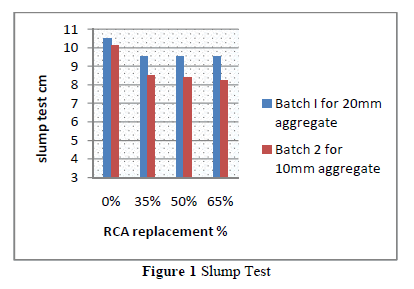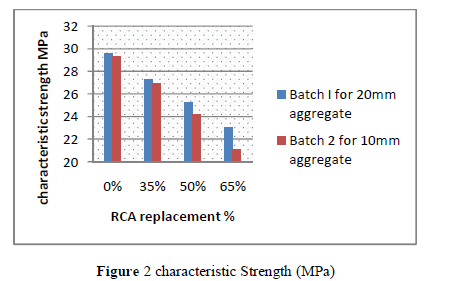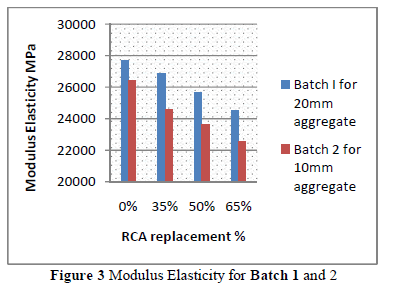ISSN ONLINE(2319-8753)PRINT(2347-6710)
ISSN ONLINE(2319-8753)PRINT(2347-6710)
| Malik A. Waheed, Parvaiz A. Khan, Sharad C. Tripathi, A. M. Aslam, Azad A. Mansoori, Purushottam Bhawre and A. K. Gwal Space Science Laboratory, Department of Physics, Barkatullah University, Bhopal, India |
| Related article at Pubmed, Scholar Google |
Visit for more related articles at International Journal of Innovative Research in Science, Engineering and Technology
The solar activity follows an eleven year cyclic variability. The long term changes in the solar activity have a direct impact on the geomagnetic activity. In the present study, we have investigated the geomagnetic response of solar activity. To describe the long term variations of the solar activity we have selected two solar activity indices namely Sunspot Number (Rz) and solar radio flux (F10.7). Similarly to describe the level of geomagnetic activity we have taken four geomagnetic indices namely Dst, Kp, Aa and Ap. The study is carried out for the solar cycle 23 and minimum of solar cycle 24. From our study we found that long term changes in the geomagnetic activity follow a synchronous variation with the corresponding changes in the solar activity. We performed correlation analysis between solar activity and geomagnetic activity indices to access the magnitude of association between them. From correlation analysis we found that both the solar activity indices exhibit a strong correlation with all the four geomagnetic indices. The correlation coefficients of Rz with Dst, Kp, Aa and Ap are 0.78, 0.83, 0.81 and 0.86 respectively while those of F10.7 index with the same indices in the same order are 0.77, 0.83, 0.81 and 0.88.
Keywords |
| Solar Cycle, Solar Indices, Geomagnetic Indices, Plasma. |
INTRODUCTION |
| The solar activity has long been recognized to be the origin of the geomagnetic activity. The geomagnetic activity is the result of variable current systems formed in the magnetosphere and ionosphere as a consequence of the interaction of the solar wind with the magnetosphere in addition to the dynamo operating inside the earth. The magnetic fields play a determining role in the dynamics of solar activity. The solar activity follows a regular periodic variation with eleven year periodicity, commonly known as solar cycle. The solar cycle is the periodic occurrence of sunspots at sun’s surface. The changes in the solar activity can have a significant impact on the geomagnetic activity. Even small changes in solar activity can impact earth’s magnetic field in significant and surprisingly complex way. Since the solar activity follows a periodic variability we can expect some kind of periodicity in the geomagnetic activity. |
| The association of 11-year solar cycle variability with the variability of electromagnetic environment of Earth has been studied in the last decades[1, 2, 3]. A long term correlation study between solar and geomagnetic activity has been reported, using annual averages of the aa index and of the sunspot number Rz as well as Dst and AE geomagnetic indices and solar wind speed data are used for more recent periods, during 1868-2000[4]. It has been found that the geomagnetic and solar activity correlation has decreased since the end of the 19th century, and the lag between them has increased. The variations of Rz and aa were in phase in the early period (solar cycles 11-14), and became out of phase in later periods (with a lag of 2 years in solar cycle 22)[4]. |
| Apart from the geodynamo the solar activity is also recognized as one of the prominent sources of geomagnetic activity[5, 6, 7]. During the solar wind magnetoshperic interaction a variable current system is developed in the magnetosphere-ionosphere system which contributes to the geomagnetic activity[1, 8]. The geomagnetic activity has been found to be well correlated with the solar wind speed (v), the southward component (Bz) of the interplanetary magnetic field (IMF) and the product BzV2[5, 9, 10, 11]. The solar sources of geomagnetic activity are generally thought to be of two categories[12,13]. One source, Coronal Mass Ejections (CMEs), has a frequency of occurrence that is in phase with the sunspot cycle while the second source, high-speed solar wind streams, is out of phase with the sunspot cycle. |
| Feynman[14], analyzed the relationship between the annual aa and Rz from 1869 to 1975 by decomposing aa into two equally strong periodic components: one (the “short lived” R component) associated with solar flares, prominence eruptions, and CMEs which follows the solar activity cycle and a second component (the “slowly varying” I component) associated with recurrent high speed solar wind streams which is out of phase with the solar activity cycle. |
| In the present investigation we have made an attempt to study the systematic relationship between geomagnetic and solar activities during 1996-2010. We found the long term variability of solar and geomagnetic activities represent strikingly similar features. A strong correlation was found to exist between the solar geomagnetic activity indices. At the same time the periodicity of the two activities were found to be different. |
DATA SETS AND DATA SOURCES |
| To study the effect of long term solar activity on the geomagnetic activity we have taken 23rd and starting phase of 24th solar cycle (1996-2010) as our period of study. To characterize the solar activity variations we have used the sunspot number (Rz) and solar radio flux at 2800MHz (F10.7cm) as two indices. A number of indices have been developed to describe the state of geomagnetic activity. However, we have used only four parameters viz Kp, Dst, Ap and Aa. The data for solar indices were obtained from National Geophysical Data Center (NGDC) available at its website at URL http://www.ngdc.noaa.gov. The NGDC provides the daily averaged values of various solar indices. From the daily values we have computed the monthly averages and finally yearly averaged values for the period of 1996-2010. The data of geomagnetic indices were obtained from the space physics data facility SPDF, OMNI available at its website http://omniweb.gsfc.nasa.gov./form/dx1.html. The OMNI data contains daily and hourly averaged values. Here also we have calculated the monthly and then yearly averaged values from the available daily values. The correlation was also computed between the solar and geomagnetic indices to establish the magnitude of connection between solar activity and geomagnetic activity. In general we observed a very good correlation between all the solar and geomagnetic indices that we used in our study. |
ANALYSIS AND RESULTS |
| After processing the data and preparing data set the analysis was made. Figure 1 shows the annual variation of geomagnetic indices Kp, Dst, Ap and Aa with solar radio flux at 2800 MHz. From the graph we observe that the geomagnetic indices and F10.7 follow strikingly similar pattern. As the F10.7 starts to increase the geomagnetic indices also starts to increase and achieve their maxima when F10.7 maximizes. During the declining phase of solar cycle 23 both follow a same pattern as shown in the figure. Both the indices F10.7 and geomagnetic indices achieve their maxima at the same time i.e. in the year 2001. From the Figure 2 it becomes clear that geomagnetic indices exhibit a very strong correlation with F10.7cm. |
 |
| Figure 3 shows the variation of geomagnetic indices Kp, Dst ,Ap and Aa with sunspot number (Rz) and that both indices follow a similar pattern. The solar activity was maximum in the year 2000 with maximum sunspot number 119. Solar activity was at its peak during 2000-2002. During these years the magnetic activity also remained high. These years were dominated by maximum no of intense geomagnetic storms. During the declining phase of the solar cycle the solar 23 activity started to decrease, the geomagnetic activity also decreased. However the decrease in geomagnetic activity corresponding to solar activity was slow. The peak of the solar activity occurred in 2000 however, the geomagnetic indices achieved their peaks in the year 2001. This shows geomagnetic activity is a delayed response of solar activity. Figure 4 shows the correlation between sunspot number and geomagnetic indices. From this figure it becomes clear that geomagnetic indices exhibit a very good correlation with sunspot number. |
 |
| The yearly time profile of both geomagnetic and solar indices is shown in Figure 5 to show the periodicity of solar and geomagnetic activity. From the plot we find that the solar activity has the eleven year periodicity, while as geomagnetic activity follows a different periodicity. However it is quite obvious that the geomagnetic activity follows the solar activity closely. |
 |
CONCLUSION |
| In this paper we have examined the effects of long term solar variations on geomagnetic activity during the solar cycle 23 and stating phase of cycle 24. The solar cycle was at its peak during 2000-2002. During these years the magnetic activity was also in highest phase. These years were dominated by the maximum number of intense geomagnetic storms as reflected by the Dst index. When the solar cycle entered the declining phase the solar activity started to decrease. Consequently the magnetic activity also started decreasing slowly. However the decrease in the magnetic activity was slow as compared to the decrease in the solar activity. Although the peak of the sunspot number occurred in the year 2000 the magnetic indices achieved their peaks in the year 2001 after almost one year lag. The correlation between sunspot number and solar radio flux with Kp, Dst, Ap and Aa were also studied. It was found that Rz and F10.7 follows a very good correlation with all the geomagnetic indices. |
| On the basis of observations and results following important conclusions were drawn: |
| • The geomagnetic activity follows the solar activity very closely. These follow a periodicity. The periodicity is however not the same. |
| • The geomagnetic and solar indices exhibit a very strong correlation between 75% - 85%. The correlation of geomagnetic indices with F10.7 was found to be stronger than with sunspot number. |
| • During the declining phase of the solar cycle the solar activity decreases faster than the geomagnetic activity. |
ACKNOWLWDGEMENT |
| The authors are thankful to National Geophysical Data Center (NGDC) for making the data of solar indices available free at its website and Space Physics Data Facility (SPDF), OMNI web for making the data of geomagnetic indices available free at its website. |
References |
|